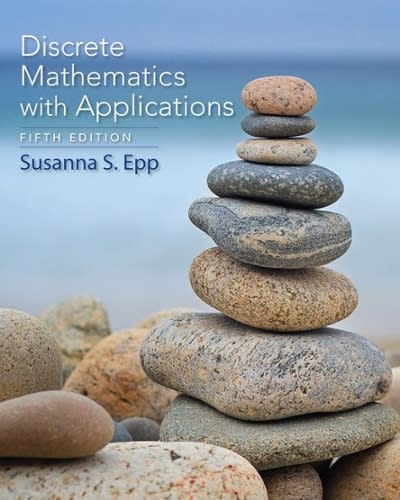Question
Moreover, inappropriate coin lands head up with a probability of 0.4 when it is flipped. John has been drawn nearer to flip this coin twice


Moreover, inappropriate coin lands head up with a probability of 0.4 when it is flipped. John has been drawn nearer to flip this coin twice in movement and told that he will win seven dollars if the two flips showed up. John was moreover educated that accepting just one flip grounds head up, he will win 4$, while if none land head up he will win nothing.
Let E[x] be The sporadic variable that tends to the proportion of money John can win in this activity.
What is E[X]?
a. $2.92
b. $3.04
c. $3.88
d. $2.88
e. $3.51
f. Nothing except if there are different choices
The heights of kindergarten kids are around conventionally circled with the going with. (Offer your reactions right to four decimal spots.)
? = 35 and ? = 3.2 inches
(a) If an individual kindergarten kid is picked aimlessly, what is the probability that the individual has a height some place in the scope of 32.8 and 37.2 inches?
(b) A homeroom of 25 of these children is used for instance. What is the probability that the class mean x is some place in the scope of 32.8 and 37.2 inches?
(c) If an individual kindergarten kid is picked erratically, what is the probability that the individual being referred to is taller than 36.5 inches?
(d) A homeroom of 25 of these kindergarten kids is used for instance. What is the probability that the class mean x is more conspicuous than 36.5 inches?
@17@
The correct size of a nickel is 21.21 millimeters. Considering that, the data can be summarized into the going with table appearance the amounts of children from each pay bundle who drew the nickel pretty much nothing and exorbitantly tremendous:
Excessively Small Too Large Total
Low Income 8 12 20
Big league salary 10 5 15
Absolute 18 17 35
3. Considering this data: (offer your reactions as segments, or decimals to at any rate 3 decimal spots)
a) The degree of children from the low compensation bundle that drew the nickel too tremendous is:
b) The degree of children from the significant class compensation pack that drew the nickel too enormous is:
c) The degree of all children that drew the nickel too gigantic is:
d) If a young person is picked capriciously, what is the probability they are in the low compensation pack, given they drew the nickel unnecessarily enormous?
e) If an adolescent is picked aimlessly, what is the probability they are in the high level compensation assembling OR drew the nickel unnecessarily colossal?
The correct size of a nickel is 21.21 millimeters. Considering that, the data can be summarized into the going with table:
Excessively Small Too Large Total
Low Income 18 22 40
Big time salary 21 14 35
Complete 39 36 75
Considering this data: (offer your reactions as parts, or decimals to at any rate 3 decimal spots)
a) The degree of children from the low compensation bundle that drew the nickel too tremendous is:
b) The degree of children from the big deal compensation pack that drew the nickel too gigantic is:
c) The degree of all young people that drew the nickel too tremendous is:
d) If a child is picked aimlessly, what is the probability they are in the low compensation pack, given they drew the nickel unreasonably colossal?



Step by Step Solution
There are 3 Steps involved in it
Step: 1

Get Instant Access to Expert-Tailored Solutions
See step-by-step solutions with expert insights and AI powered tools for academic success
Step: 2

Step: 3

Ace Your Homework with AI
Get the answers you need in no time with our AI-driven, step-by-step assistance
Get Started


